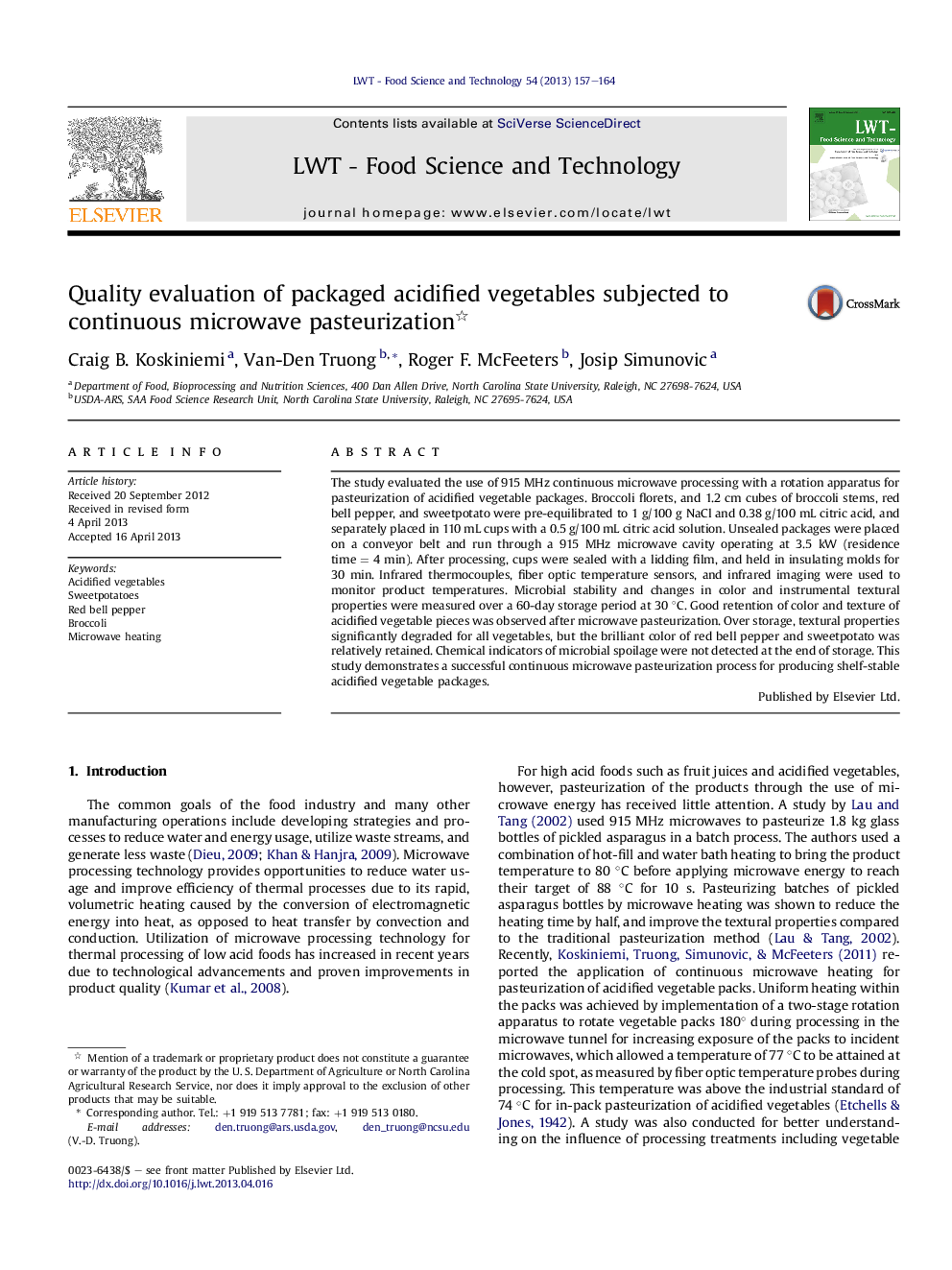| Article ID | Journal | Published Year | Pages | File Type |
|---|---|---|---|---|
| 6404203 | LWT - Food Science and Technology | 2013 | 8 Pages |
â¢Pasteurization of acidified vegetable packs was achieved by microwave processing.â¢Rotation of packages by 180° in the microwave tunnel improved heating performance.â¢Microwave processed vegetable pieces had good retention of color and firmness.â¢Pasteurized packs were microbial shelf-stable at 30 °C for at least 60 days.
The study evaluated the use of 915 MHz continuous microwave processing with a rotation apparatus for pasteurization of acidified vegetable packages. Broccoli florets, and 1.2 cm cubes of broccoli stems, red bell pepper, and sweetpotato were pre-equilibrated to 1 g/100 g NaCl and 0.38 g/100 mL citric acid, and separately placed in 110 mL cups with a 0.5 g/100 mL citric acid solution. Unsealed packages were placed on a conveyor belt and run through a 915 MHz microwave cavity operating at 3.5 kW (residence time = 4 min). After processing, cups were sealed with a lidding film, and held in insulating molds for 30 min. Infrared thermocouples, fiber optic temperature sensors, and infrared imaging were used to monitor product temperatures. Microbial stability and changes in color and instrumental textural properties were measured over a 60-day storage period at 30 °C. Good retention of color and texture of acidified vegetable pieces was observed after microwave pasteurization. Over storage, textural properties significantly degraded for all vegetables, but the brilliant color of red bell pepper and sweetpotato was relatively retained. Chemical indicators of microbial spoilage were not detected at the end of storage. This study demonstrates a successful continuous microwave pasteurization process for producing shelf-stable acidified vegetable packages.
